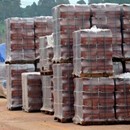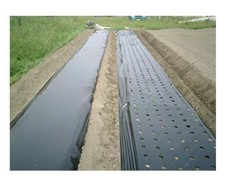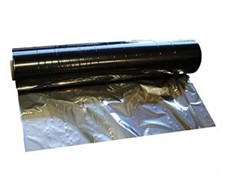8 4 Isotopic Dating Methods Physical Geology
This radiation may come from radioactive substances such as uranium, present in the clay or burial medium, or from cosmic radiation. When the ceramic is heated to a very high temperature (over 932°F [500°C]), these electrons fall back to the ground state, emitting light in the process and resetting the “clock” to zero. Scientists can determine how many years have cheekd com passed since a ceramic piece was fired by heating it in the laboratory and measuring how much light is given off. Thermoluminescence dating has the advantage of covering the time interval between radiocarbon and potassium-argon dating, or 40, 000–200, 000 years. There are many absolute dating methods that rely on some process other than radioactive decay.
It is a reliable geological clock for dating historical events or rock/fossil specimens. For instance, geologists use this technique to estimate how long ago rocks formed and to deduce the ages of fossils enclosed within those rocks. For example, if the measured abundance of 14C and 14N in a bone are equal, one half-life has passed and the bone is 5,730 years old (an amount equal to the half-life of 14C).
radiometric dating
The number of protons in each element determines how radioactive the isotope is. Scientists use the number of protons in a radioactive isotope to date fossils. Understanding the dates of the fossils at Sterkfontein can be tricky. Normally, scientists estimate the ages of fossils by analyzing the layers in which they are found; the deeper a layer is, the older it may be.
Fossil traces have been found in rocks of all ages, with the simplest organisms discovered in the oldest rocks. Erin DiMaggio is an assistant research professor of geosciences at Penn State University, where she studies sedimentary and volcanic rocks in Africa to learn about ancient environments. We successfully dated the Gurumaha Tuff to 2.82 million years old by dating the naturally radioactive mineral feldspar.
Genetic Dating and the DNA Clock
Homo naledi’s DNA would reveal its evolutionary relationships to ourselves and other ancient humans. Unfortunately, these elements don’t exist in dinosaur fossils themselves. Each of them typically exists in igneous rock, or rock made from cooled magma. Fossils, however, form in sedimentary rock — sediment quickly covers a dinosaur’s body, and the sediment and the bones gradually turn into rock.
Animism characterizes tribes very low in the scale of
humanity, and thence ascends, deeply modified in its transmission,
but from first to last preserving an unbroken continuity,
into the midst of high modern culture. Animism is, in fact, the
groundwork of the Philosophy of Religion, from that of
savages up to that of civilized men. And although it may
at first sight seem to afford but a bare and meagre definition
of a minimum of religion, it will be found practically
sufficient; for where the root is, the branches will generally
be produced. It is habitually found that the theory of
Animism divides into two great dogmas, forming parts of
one consistent doctrine; first, concerning souls of individual
creatures, capable of continued existence after the death or
destruction of the body; second, concerning other spirits,
upward to the rank of powerful deities. Thus Animism
in its full development, includes the belief in souls and in a
future state, in controlling deities and subordinate spirits,
these doctrines practically resulting in some kind of active
worship.
Study Questions
These methods only work on materials that are crystalline, meaning they have a lattice-like atomic arrangement. All crystalline structures have imperfections caused by missing atoms or the presence of impurities in the structure. When exposed to radiation from the environment, electrons in the structure absorb energy, detach from the nucleus of their atom, and become “trapped” in these lattice imperfections and begin to accumulate. Most isotopes found on Earth are stable, meaning they do not change their composition of protons and neutrons regardless of time or environmental conditions. Some isotopes, however, have an unstable nucleus and are radioactive. Radioactive decay changes an unstable isotope of an element to a stable one.
Lead-210, a naturally occurring radionuclide with a half-life of 21.4 years, is also used to obtain kinetic information about Earth. Radon-222 decays to polonium-218, which attaches to particles in the atmosphere and is consequently rained out—falling into and traveling through streams, rivers, and lakes. The hominid skulls found at Herto are important discoveries because at the time of their discovery, they were some of the oldest near-modern human remains on record (Graham 2003).
I am the barrier between
night and day.”’[439] It is seldom that solar characteristics are
337more distinctly marked in the several details of a myth
than they are here. Day is daily swallowed up by Night, to be set free again
at dawn, and from time to time suffers a like but shorter
durance in the maw of the Eclipse and the Storm-cloud;
335Summer is overcome and prisoned by dark Winter, to be
again set free. It is a plausible opinion that such scenes
from the great nature-drama of the conflict of light and
darkness are, generally speaking, the simple facts, which in
many lands and ages have been told in mythic shape, as
legends of a Hero or maiden devoured by a Monster, and
hacked out again or disgorged.
These nuclides are isotopes created by cosmic rays — energetic particles that can originate from the sun, from outside of the solar system, and even from other galaxies. These rays cause reactions within rocks that create specific types of radioactive atoms with different numbers of neutrons from the element’s stable form. However, rocks underground are safe from these intergalactic particles.




